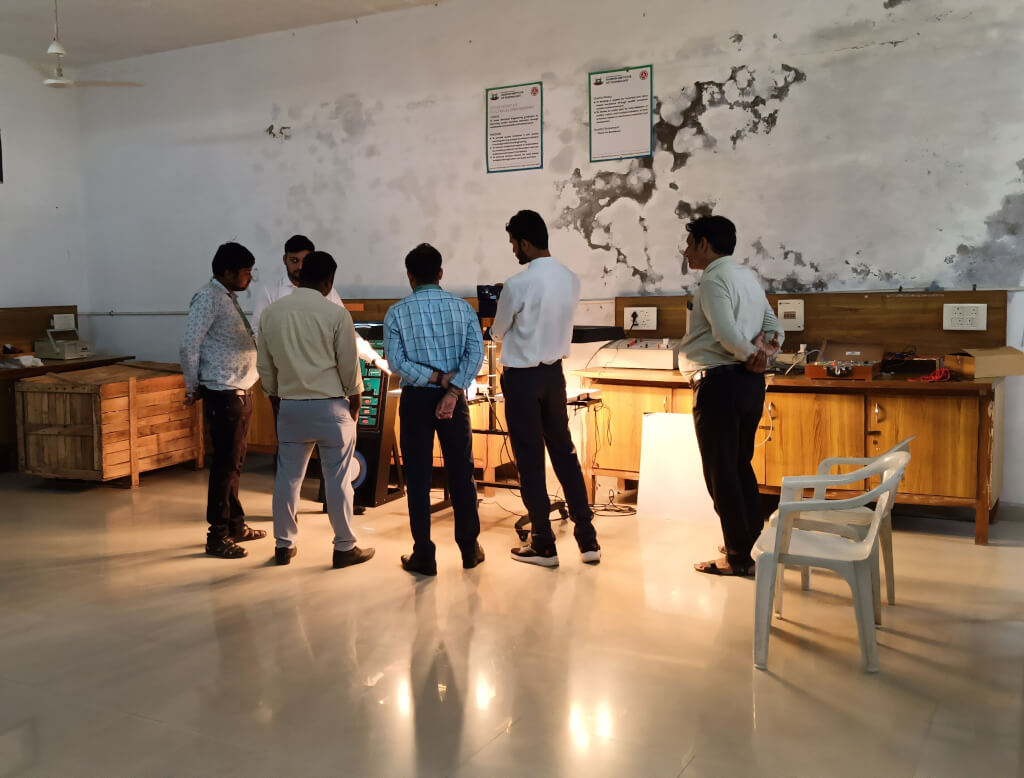Nagpur Institute of Technology (NIT), renowned for its forward-thinking initiatives, has taken a bold step in advancing renewable energy education by installing the Solar PV Training and Research System from Ecosense. In the face of growing environmental concerns, the Department of Electrical Engineering recognizes the critical role solar energy plays in reducing carbon emissions and mitigating environmental damage. By integrating this cutting-edge technology into its curriculum, the institute aims to equip students with both theoretical knowledge and practical skills to harness the power of solar energy. This initiative is in line with NIT’s mission to prepare students to be industry-ready and future leaders in sustainable energy.
The installation of Ecosense’s Solar PV Training and Research System at NIT marks a significant milestone in renewable energy education. This comprehensive system serves as a state-of-the-art platform for students to delve into the science of solar photovoltaics (PV), an essential technology in the global push toward clean energy. It allows students to engage in both hands-on learning and advanced research, giving them a solid foundation to pursue careers in solar energy technology and other renewable sectors.
Comprehensive Learning through the Solar PV Training and Research System
The Solar PV Training and Research System is designed with the objective of educating students on the practical and theoretical aspects of standalone Solar PV systems. Solar technology is constantly evolving, and this system provides the perfect environment for students to explore the latest advancements while gaining a deep understanding of how solar panels work in real-world conditions. The system's capabilities are organized into three primary areas that focus on different elements of solar PV systems:

Ecosense Installs Solar PV Training and Research System at Nagpur Institute of Technology
1. Fundamentals of Solar PV Panels
This module introduces students to the essential principles of solar PV technology. They study the I-V (current-voltage) and P-V (power-voltage) characteristics of solar panels, which are crucial in understanding the relationship between power output and environmental conditions.
Students explore how to configure solar panels in both series and parallel connections, learning how these arrangements impact energy generation. The system also allows them to observe the effects of various factors such as irradiation levels, temperature fluctuations, shading, tilt angles, and the geographic location of the panels. This hands-on experience is invaluable for understanding the real-world challenges that solar power systems face and how to optimize them for maximum efficiency.
2. Components and Assembly of Standalone Solar PV Systems
In this section, students delve into the core components that make up a standalone solar PV system. They learn about blocking diodes, bypass diodes, solar charge controllers, and inverters, all of which play essential roles in the efficient operation of solar energy systems.
Students are introduced to the differences between Maximum Power Point Tracking (MPPT) and Pulse Width Modulation (PWM) charge controllers, which are crucial for optimizing energy capture from solar panels. The system provides the opportunity to investigate AC and DC loads, along with the characteristics of battery charging and discharging, allowing students to understand how solar energy is stored and distributed in standalone systems. Furthermore, they gain experience in assembling the components and performing power flow calculations, which are essential skills for designing and managing solar power systems.
3. Research Opportunities in PV Systems
Ecosense’s Solar PV Training and Research System also offers a dedicated research unit that enables students to carry out advanced research projects on standalone solar PV systems. This includes experimenting with MPPT algorithms and examining the conditions under which they operate most efficiently.
The system is equipped to handle both automatic and manual gate signals, allowing for flexibility in controlling the solar charge controllers. Students are encouraged to implement their own MPPT algorithms on the system, providing them with the opportunity to explore innovative approaches to maximizing solar energy capture. This feature makes the system ideal not only for undergraduate students but also for scholars who are conducting research in renewable energy technologies.
Technical Highlights and Advantages
The Solar PV Training and Research System comes with a range of technical features that enhance the learning experience. It includes an active measurement panel that records voltage, current, and temperature data, enabling students to monitor the system’s performance in real-time.
The system’s variable irradiation feature simulates different sunlight conditions, allowing students to study how solar panels perform under varying weather conditions. It also features an adjustable tilt angle, helping students explore the effect of angle adjustments on the power output of PV modules. Additionally, shading blades are provided to demonstrate the impact of shading on solar energy generation. These tools give students hands-on experience in overcoming common challenges faced in solar energy applications.
Other key advantages include the ability to calculate power flow in standalone systems, real-time plotting of performance curves (I-V, P-V, and I-time), and the ability to conduct studies using the Perturb and Observe MPPT algorithm. The system also includes IP 65-rated PV panels, ensuring durability in outdoor conditions, and is equipped with a solar insolation meter and an angle measurement tool. Furthermore, all data can be exported in CSV format, and graphs can be saved as images, facilitating deeper analysis and reporting.

Ecosense Installs Solar PV Training and Research System at Nagpur Institute of Technology
Demonstration and Training Program
To ensure effective utilization of the system, Ecosense conducted a comprehensive training session for the faculty, researchers, and technicians at Nagpur Institute of Technology. This demonstration provided hands-on experience with the equipment, enabling participants to become proficient in its operation. These trained educators and technicians will, in turn, be responsible for guiding students and professionals in mastering solar PV technology, preparing them for successful careers in the renewable energy industry.
Glimpses from Demonstration
